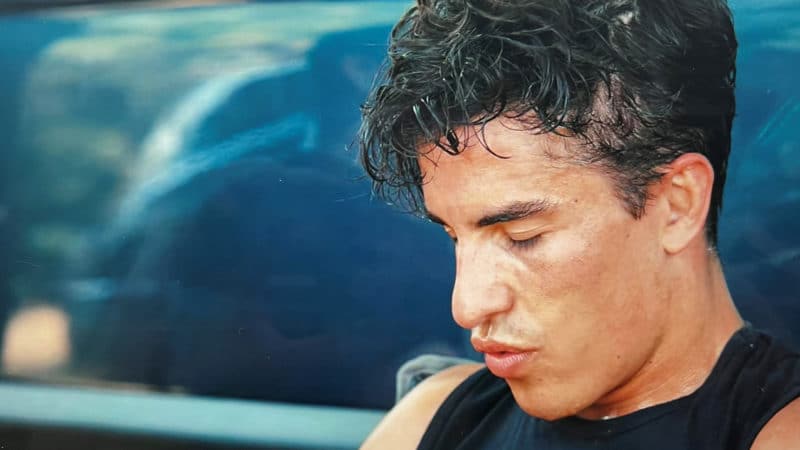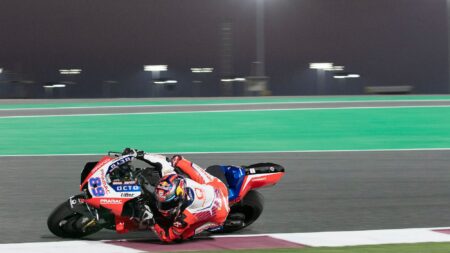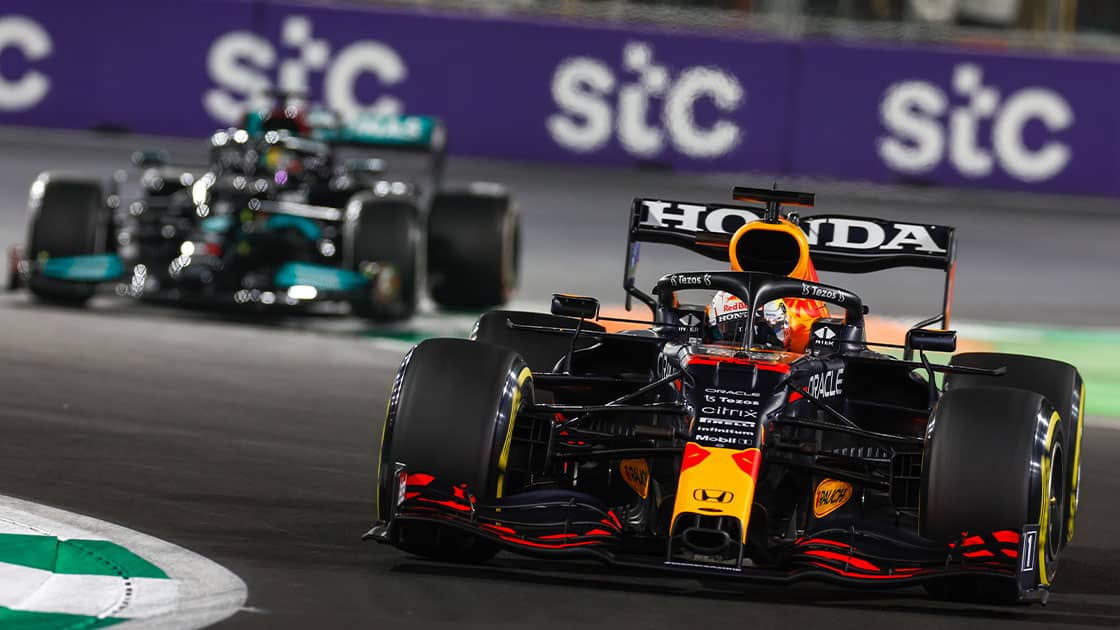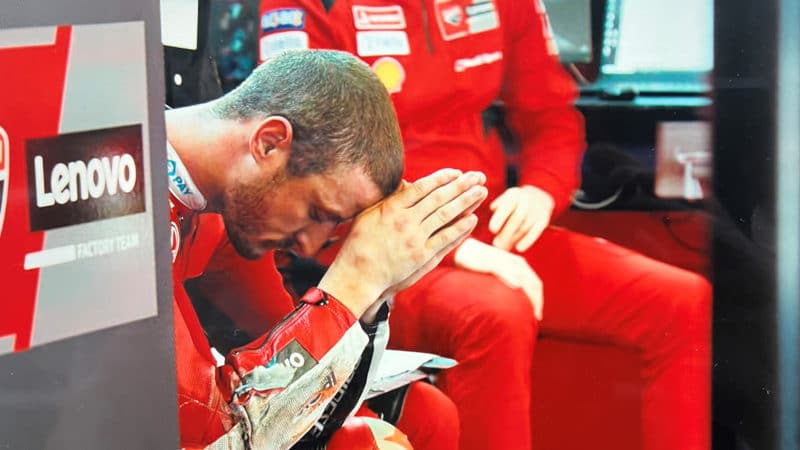Martin puts his head in his hands, exhales heavily, raises his head and grins.
“Full throttle all the way,” he says. “Until the end.”
Psychic gymnastics completed, in 20 seconds or so.
There’s Jack Miller helping out Aussie youngster Billy van Eerde, who’s struggling with arm pump at a CEV race. Van Eerde is so upset with the problem that he’s crying. Do racers cry? Of course they do.
Maverick Viñales admits that he cried night after night when his Yamaha ride was falling to pieces. We get to see a remarkable clip from inside the Yamaha garage in which Viñales tells Yamaha race boss Lin Jarvis to release him from his contract, so he can ride another motorcycle.
The Viñales Yamaha/Aprilia story enthralled MotoGP fans last year because everyone loves a good bust-up. MU (that’s what we’ll call MotoGP Unlimited from now on) loves it too but covers the sorry tale with respect.
Nonetheless we get a glimpse into the darkness within Viñales, a super-talented rider and apparently a sweet man, whose mind seems to be stalked by paranoia.
The event that brought an immediate end to his Yamaha contract was his behaviour at the end of the Styrian GP, when he abused his M1 engine. That followed a botched start, when the engine stalled on the grid.
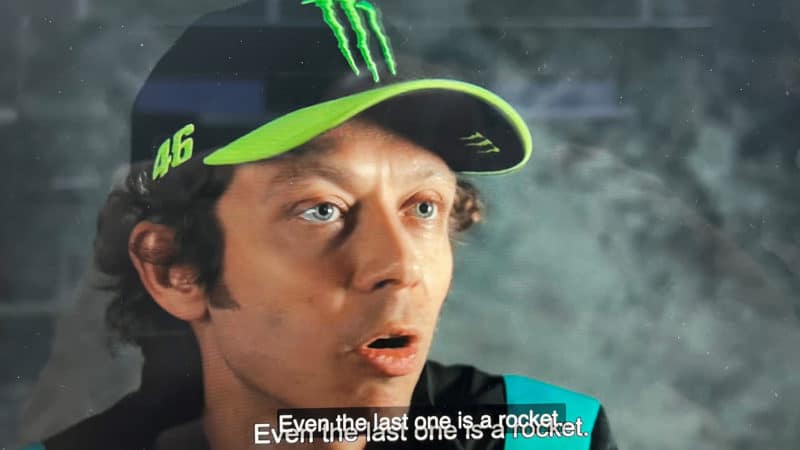
Rossi discusses MotoGP intensity – shame about the botched sub-titles
Amazon Prime
After the race Viñales accuses Jarvis of stalling the engine from the Yamaha garage. “You stalled the bike!” he shouts.
All kinds of remote machine control are banned in MotoGP, so to achieve this goal of screwing over probably its best-paid rider Yamaha would’ve had to break all the rules.
Several years ago I had a chat about Viñales and his mercurial character with a Spanish former world champion, who knows his countrymen well. He tried to explain to Viñales that why would Yamaha pay him many millions a year and provide him with motorcycles that cost many millions more, with the express intention of making sure he fails as miserably as possible? It simply does not add up, in any way at all.
MU nicely paints the red mist that overwhelms many riders when they are racing, sometimes until they see nothing else. Never mind the technology overload, MotoGP isn’t all about technique, strategies and data, it’s also about the cave-man aggression that the riders must control and channel, because if they don’t that red mist will become blood, either their own or someone else’s.
There are few more emotional riders in the paddock than Aleix Espargaró, who seems to view much of his racing life through a red-tinted visor but has his own way of soothing his cave-man aggression – he fires it out of his mouth.
One of the later episodes of MU 2021 focuses on the Spaniard’s historic British GP, when he scored Aprilia’s first four-stroke MotoGP podium. Although that Sunday went perfectly for Espargaró the preceding two days were more complicated. MU shows four or five quick-fire clips of him returning to his garage, firing F bombs in all directions, including at his younger brother, who had badly baulked him on a fast lap.
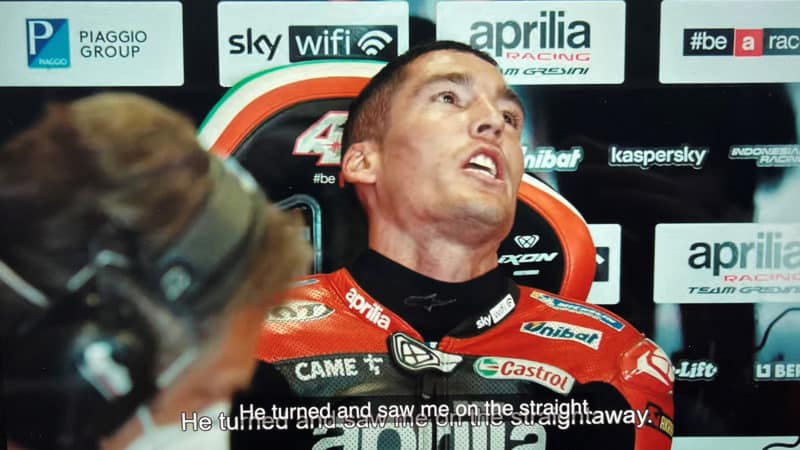
Aleix Espargaró launches another salvo of F bombs
Amazon Prime
“Motherf****r!” he screams, possibly without considering the exact meaning of that term.
That salvo of F words is followed by a studio interview with Espargaró’s long-time crew chief Antonio Jimenez, who has heard his rider drop many thousands of F bombs over the years and knows to deal with them. He ignores it all, waits for his man to calm down and then goes to work.
That same weekend Espargaró’s younger brother Pol took pole at Silverstone, his first decent day on Honda’s RC213V after months of trying. Still wearing his leathers and still buzzing with excitement he FaceTimes his wife Carlota.
Their daughter Alex is eating a doughnut.
“She’s earned it,” says Carlota. “She suffered a lot with that bad temper of yours.”
